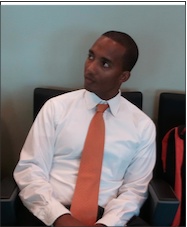By: Chad Wilson – Editor GridironStuds Blog
Twitter: @GridironStuds
As the flag landed on the turf of Sun Devil Stadium on January 3, 2003 symbolizing the end of the scariest mini era in college football history, an entire nation of college football fans and programs rejoiced. A Hurricane win vs. Ohio St. and the reign of terror may have grown stronger like an uncontrolled forest fire. In the wake of this unfathomable loss, college football programs began their forensic like study of the Miami Hurricanes program. In so doing, plans were made to cut into the huge slice of pie that not only was Miami eating from heartily but the other two major college football programs in the state were enjoying as well.
From 1992-2002, Miami, Florida and Florida St. combined to have 11 undefeated or one loss seasons. Since that Fiesta Bowl loss by the Canes in 2002, the three schools have combined for five with Miami accounting for all of zero. All of college football was forced to do something after Miami’s dominating 2001 season that produced a legion of NFL talent and ran roughshod through opponents. Out of state programs observed the construction of the rosters of the big three and realized that some of the biggest performers were some lesser known talents tucked away in the corners and bushes of the state of Florida.
Scouting Florida High School football was not something new for college programs across the nation but the need to do so increased rapidly at the turn of the millennium as it seemed Miami, Florida and Florida St. were going to juggle the Sears trophy between them for the foreseeable future. Programs already scouting the state, doubled down on those efforts. Programs who had not done so as much scurried up the budget to embark on the endeavor. Right around the time that out of state teams came to this reality, the powers and capabilities of the World Wide Web began their exponential growth. Search engines like Yahoo and Google starting expanding their ability to find information from anywhere on the globe, blogs started to become a thing and YouTube (2005) came on the scene to forever changed how coaches received highlight videos.
With the plan set, the tools to execute the job were getting sharpened. Now, college coaches did not need to book flights to find players, they could have their info delivered to their desktop or laptop with a couple of keystrokes. Now, expeditions into Florida’s fertile recruiting ground could be more efficient as coaches could follow the route to the schools they already found to have the talent during their computer research. As time wore on, companies capitalized on the digital revolution to provide opportunities for under served recruits crawling all over the Florida landscape. Companies like GridironStuds, Rivals, Scout.com, Hudl and others would be the conduit for coaches to discover talent.
As time wore on, coaches learned that the Internet was great for finding the talent within the Florida borders but more was going to be needed to actually rip that talent away from the Big Three. Miami, Florida and Florida St. had established a strong history of performance and deliverance of talent to NFL riches. Getting a Florida native to leave their backyard was going to need something more than just a coach knowing the talent existed. Enter the mentor. It’s a long standing fact that Florida HS coaches get paid a mere pittance for their toils on the prep gridiron. Salaries often falling in under $5000 annually for “volunteers” who will spend an entire year developing talent is enough to make Nike factory workers in the Far East look at coaches with scorn. Financial incentives to morally and economically challenged ball coaches became the key to victory in Florida recruiting wars. Padding income with the deliverance of local talent became a way to profit from the one thing the lovers of the game loved to do the most. Eventually, some would realize that it wasn’t even necessary to coach at a school to fold presidential paper. In fact, not becoming attached to one school meant that the professional mentors could ride around collecting talent like a lover boy plucking daffodils to give to the apple of his eye. Delivering the talent to the doorstep of programs conducting camps became an industry of it’s own.
Simultaneously, lower tiered college football programs, not in the mentor business, became very successful sneaking away under recognized talent while the big programs duked it out over the 5 stars. The major message being preached was why sit on the bench for three years when you can come be the man as a freshman for us. The increased competition for the big time players combined with the scorned 3 stars getting showered with love from the out of state programs slowly weakened the rosters of Florida’s big three. Miami was hit the hardest during this era of nationwide empowerment. One of the biggest reasons for this has been that South Florida has the most talent and was thus hit the hardest by raiding out of state programs.
The change in times made it almost impossible for the Frank Gores of the world to see it fit to sit behind Clinton Portis and Willis McGahee waiting for his chance to shine. In 2017, Frank Gore goes to LSU, Michigan, Pitt or any other program with a roster opening and a strong opportunity. The likes of a Frank Gore would be taken to and shown the campus by the mentor who is eager to satisfy those programs for a multitude of reasons.
There are two ways to look at this. Fans of college football and kids can see it to be a blessing that athletes in the state of Florida are getting increased opportunities to be successful. Prior to this age of Florida intrusion, kids could sit on rosters and “possibly” get a chance while others made their way to junior colleges in hopes of discovery in a land far away. The other way this can be viewed is as an affront to the state from which you come from. Fans of the Florida schools certainly see it as the latter. However, fans have a singular focus. Fans want players and could care very little about the cost to the athlete in the quest for fans to be happy each and every Saturday. It’s the good ole catch-22.
At the end of the day, what happened is what always happens in sports. All dynasties are studied by their opposers and will eventually be attacked. Miami, Florida and Florida State’s dominance was scary in much the same fashion that Alabama’s march on college football has a Halloween shine to it. The question is what will be the attack on Tuscaloosa? We will all have to sit back and see what history presents us.

Chad Wilson is a college football recruiting expert and creator of the GridironStudsApp which allows high school football players to gain exposure to college football coaches and fans. Wilson is a former college football player for the University of Miami (92-94) and Long Beach St. (’90-’91) and played briefly for the Seattle Seahawks (’95). He is also a former youth and high school football coach for over 15 years most recently for 5-A State of Florida Champs American Heritage. He runs All Eyes DB Camp a defensive back training company located in South Florida IG: @alleyesdbcamp. Wilson’s oldest son Quincy plays in the NFL for the New York Giants and his younger son plays cornerback for the Arizona Cardinals.


